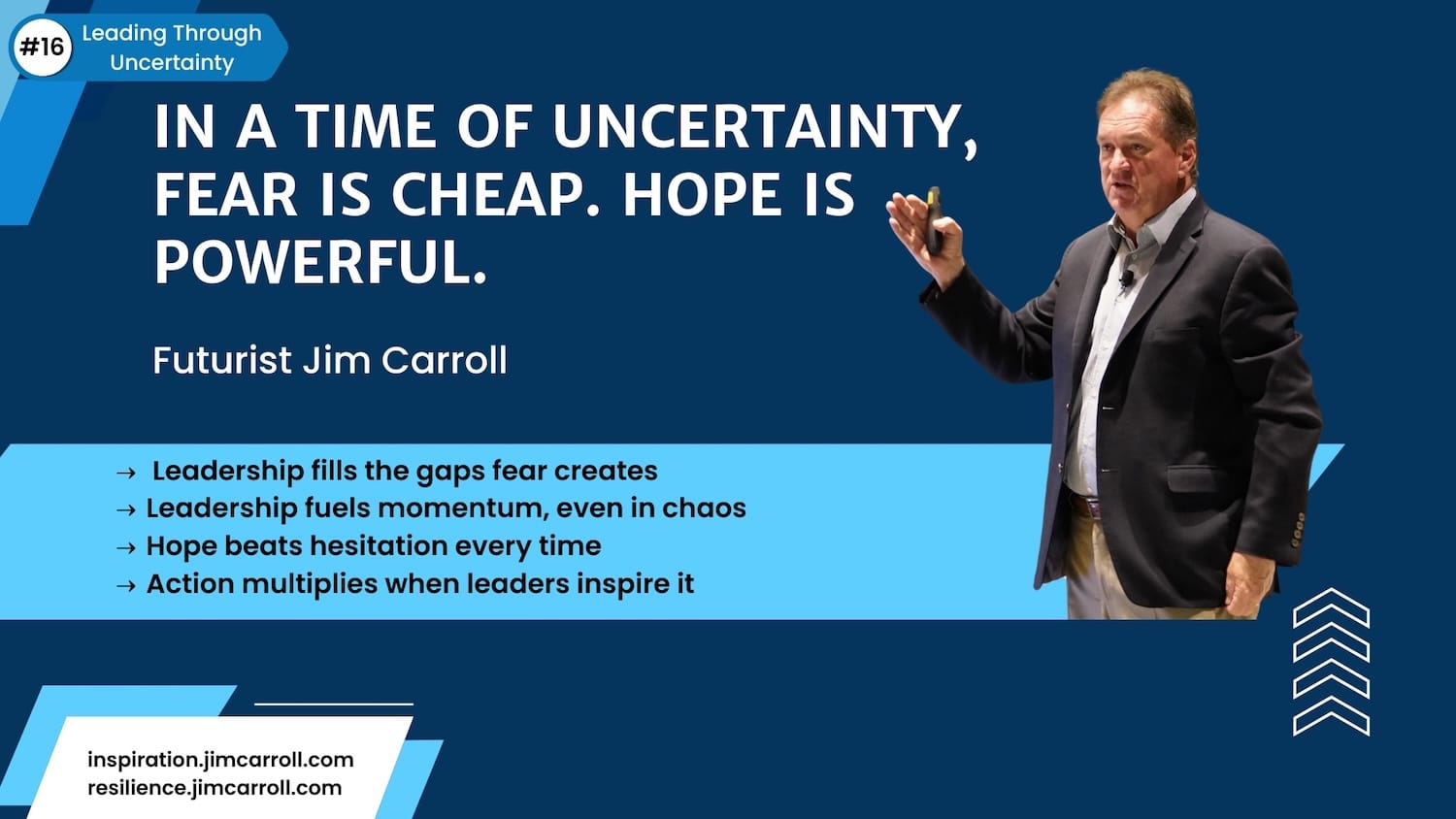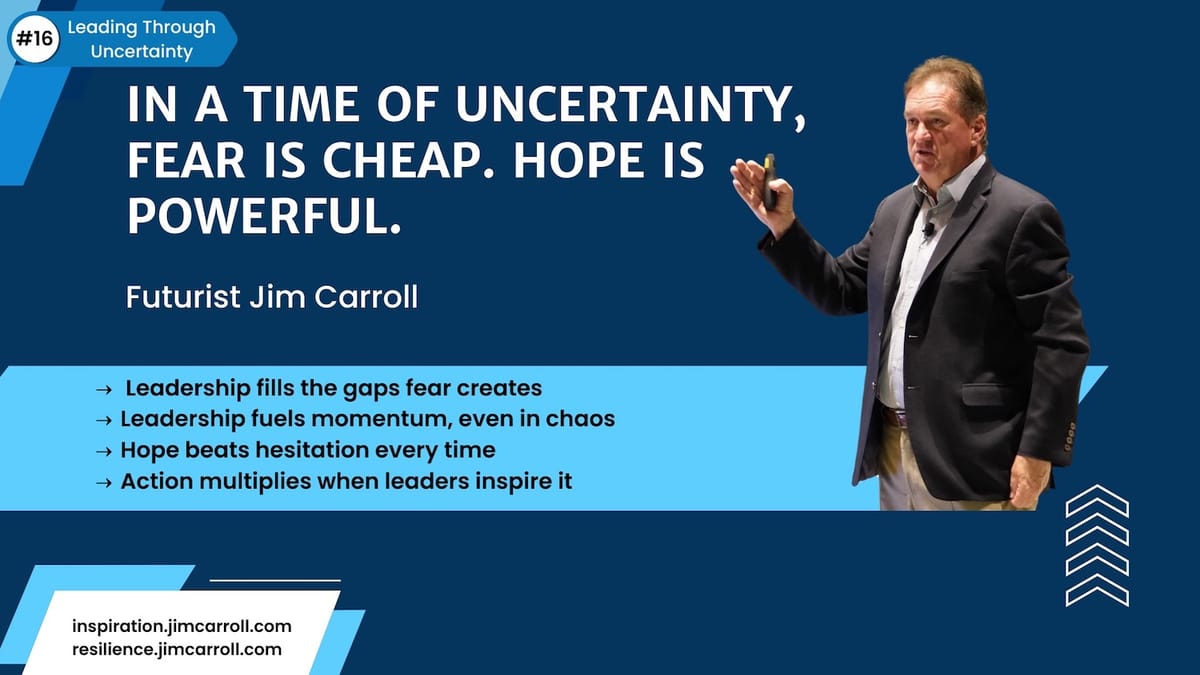"In a time of uncertainty, fear is cheap. Hope is powerful." - Futurist Jim Carroll

Throughout my career, I've often made fun of many motivational speakers.
I certainly see a lot of them - they are often on the agenda with me at the conferences and events at which I speak. And look, there are some really good ones - they could motivate you to run across the Sahara in a bathing suit while eating broccoli. At the same time, many just have a bit of a schtick. I find they are a little bit like Chinese food - you are wildly surprised and super-motivated for an hour and then kind of forget about it. And besides, I don't think walking on fire bricks can make you a better person.
With that bit of cynicism out of the way - and I'm sure they can lob lots right back at us futurists - I will admit that I have billed myself for a time as a "motivational futurist." That's not a stretch - after all, my job is not just to help people understand the trends that define tomorrow, but to give them some motivation as to what to do to get there.
That type of thing is also the role of anyone in any type of leadership position - your job is to motivate people to align with what comes next. The simple facts behind this reality are simple. Leaders lead. They set the tone. They establish the vision. They guide the path forward. They motivate their team. They inspire them to do what's necessary. Leadership is all about lifting people up, and not letting fear drag them down.
And all of this becomes ten times more important during a time of volatility, chaos, and uncertainty. Why? In a downturn, people lose sight of the future because of fear and uncertainty. The lack of clarity and the relentless pounding of news headlines and social media posts means that fear is accentuated.
Think about it: everyone on the team is worried, cautious, and seeking clarity—at a time when clarity is in short supply. They're confused, stressed, and looking for signs of guidance. Without it, they spin their wheels. In times of uncertainty, this becomes a deadly mix:
- fear spreads faster than facts.
- caution hardens into paralysis.
- people stop moving toward opportunity—and start freezing around problems.
- without strong leadership, a team’s mindset collapses inward.
- the survival instinct takes over.
- momentum evaporates.
That's why, in a downturn, the most important role of a leader in this circumstance is to fill in the gaps - the gaps in confidence, courage, clarity, and commitment. They need to keep everyone relentlessly focused on the future, not yesterday. This becomes even more critical during an economic downturn because the margin for error shrinks and the potential for derailment grows.
So what does motivational leadership look like in a downturn? It takes on this role:
- Setting a clear, future-focused vision. Even if the path is winding, the direction must be steady.
- Staying visible, optimistic, and human. Teams don’t need superheroes—they need leaders who show up and care. Empathy matters more than ever before, even if there is some brutal cost-cutting underway
- Spotlighting progress—no matter how small. Small wins are the antidote to fear. Progress creates oxygen.
- Protecting core purpose and values. Even if tactics shift, the mission remains.
- Focusing attention forward. Every day, leaders must reframe the narrative: “We’re not stuck. We’re building.”
What happens if this type of empathetic and clear leadership is in place? Momentum starts with a firm belief about the potential for tomorrow. A motivated team moves faster, experiments more, recovers quicker, takes on bigger innovation risks, and overall, wins bigger. In the absence of that belief, even the best strategies collapse, but in the presence of belief, even imperfect strategies get traction.
Bottom line? Volatility doesn't kill companies. Fear does. Motivational leadership is the cure.
In every downturn, the leaders who keep their teams inspired, energized, and looking forward are the ones who emerge stronger—and bring everyone with them.
Futurist Jim Carroll still considers himself to be a motivational futurist, but doesn’t suggest that people walk on fire stones to find their tomorrow.

